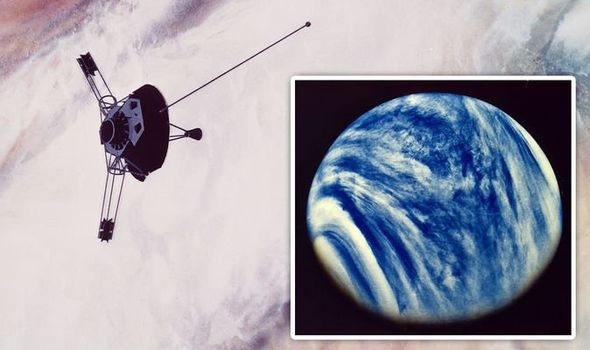VENUS has been chosen as the destination for two new NASA missions to investigate the planet’s atmosphere and geological features, following the discovery of “enough water to support plentiful life” by NASA.
The space agency has announced it will send two robotic
missions to the planet by the end of the decade. NASA administrator Bill Nelson
said the probes — named Davinci+ and Veritas — will offer the “chance to
investigate a planet we haven’t been to in more than 30 years“. The missions to
Earth’s closest planetary neighbour were picked following a peer-review process
and will explore how the once habitable world became a “hot, hellish,
unforgiving” planet.
It comes just months after astronomers from the UK
controversially detected phosphine gas 30 miles up in Venus’ clouds, leading
researchers to suggest it was a sign of alien life.
Scientists at NASA’s Goddard Institute for Space Studies
(GISS) also previously found that Venus may have once had a shallow
liquid-water ocean and a habitable surface temperature for up to two billion
years.
The findings, published in the journal Geophysical Research
Letters, were obtained with a model similar to the type used to predict future
climate change on Earth.
Michael Way, a researcher at GISS and the paper’s lead
author, said: “Many of the same tools we use to model climate change on Earth
can be adapted to study climates on other planets, both past and present.
“These results show ancient Venus may have been a very
different place than it is today.”
Scientists have long theorized that Venus was formed out of
ingredients similar to Earth’s, but followed a different evolutionary path.
Measurements by NASA’s Pioneer mission to Venus in the
Eighties first suggested Venus originally may have had an ocean, but its
proximity to the Sun means it receives far more sunlight than Earth.
This led scientists to believe that the planet’s early ocean
evaporated, water-vapour molecules were broken apart by ultraviolet radiation,
and hydrogen escaped to space.
With no water left on the surface, carbon dioxide built up
in the atmosphere, causing a runaway greenhouse effect that created present
conditions.
The GIIS team also suggested the 2016 data showed ancient
Venus had more dry land overall than Earth, especially in the tropics.
A NASA press release added: “This type of surface appears
ideal for making a planet habitable, there seems to have been enough water to
support abundant life, with sufficient land to reduce the planet’s sensitivity
to changes from incoming sunlight.”
Researchers simulated conditions of a hypothetical early
Venus with an atmosphere similar to Earth’s, a day as long as Venus’ current
day, and a shallow ocean consistent with early data from the Pioneer
spacecraft.
Co-author Anthony Del Genio said: “In the GISS model’s
simulation, Venus’ slow spin exposes its dayside to the Sun for almost two
months at a time.
“This warms the surface and produces rain that creates a
thick layer of clouds, which acts like an umbrella to shield the surface from
much of the solar heating.
“The result is mean climate temperatures that are actually a
few degrees cooler than Earth’s today.”
The last US probe to visit Venus was the Magellan orbiter in
1990.
However, other spacecraft – from Europe and Japan – have
orbited the planet since then.
The Davinci+ (Deep Atmosphere Venus Investigation of Noble
gases, Chemistry, and Imaging) mission will measure the planet’s atmosphere to
gain insight into how it formed and evolved.
It will also aim to determine whether Venus ever had an
ocean.
DAVINCI+ may also shed some light on observations of
phosphine gas in Venus’s atmosphere.
If the spacecraft finds compelling evidence of the chemical
phosphine, it may be a sign of life in the Venusian clouds.
The other mission, Veritas (Venus Emissivity, Radio Science,
InSAR, Topography, and Spectroscopy), will map the planet’s surface to
understand its geological history and investigate how it developed so
differently than Earth.
It will use a form of radar to chart surface elevations and
discover whether volcanoes and earthquakes are active.







0 Comments